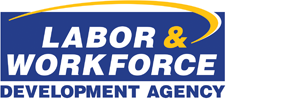What is the ABC test?
Under the ABC test, a worker is considered an employee and not an independent contractor, unless the hiring entity satisfies all three of the following conditions:
- The worker is free from the control and direction of the hiring entity in connection with the performance of the work, both under the contract for the performance of the work and in fact;
- The worker performs work that is outside the usual course of the hiring entity’s business; and
- The worker is customarily engaged in an independently established trade, occupation, or business of the same nature as that involved in the work performed.
Below is a summary of the California Supreme Court’s explanation of how to apply the ABC test.
Part A: Is the worker free from the control and direction of the hiring entity in the performance of the work, both under the contract for the performance of the work and in fact?
In analyzing Prong A of the ABC test, the California Supreme Court in Dynamex explained:
- A worker who is subject, either as a matter of contractual right or in actual practice, to the type and degree of control a business typically exercises over employees would be considered an employee.
- Depending on the nature of the work and overall arrangement between the parties, a business need not control the precise manner or details of the work in order to be found to have maintained the necessary control that an employer ordinarily possesses over its employees.
The California Supreme Court in Dynamex provided the following examples of Prong A being applied:
- An employer failed to establish that work-at-home knitters and sewers who made the clothing were sufficiently free from the company’s control where the employer provided the workers with the same patterns. The court reasoned that “[t]he degree of control and direction over the production (…) is no different when the sweater is knitted at home at midnight than if it were produced between nine and five in a factory.” (Fleece on Earth v. Dep’t of Emple. & Training (Vt. 2007) 181 Vt. 458, 923 A.2d 594.)
- A construction company proved that a worker who specialized in historic reconstruction was sufficiently free of the company’s control where the worker set his own schedule, worked without supervision, purchased all materials using his own business credit card, and had declined an offer of employment proffered by the company (Great N. Constr., Inc. v. Dept. of Labor (Vt. 2016) 204 Vt. 1, 161 A.3d 1207).
PART B: Does the worker perform work that is outside the usual course of the hiring entity’s business
- Employment proffered by the company (Great N. Constr., Inc. v. Dept. of Labor (Vt. 2016) 204 Vt. 1, 161 A.3d 1207).
In analyzing Prong B of the ABC test, the California Supreme Court in Dynamex explained:
- Contracted workers who provide services in a role comparable to that of existing employees will likely be viewed as working in the usual course of the hiring entity’s business.
The California Supreme Court in Dynamex provided the following examples of Prong B being applied:
- Prong B is satisfied (e., services are not part of the hiring entity’s usual course of business):
- When a retail store hires an outside plumber to repair a leak in a bathroom on its premises.
- When a retail store hires an outside electrician to install a new electrical line.
- Prong B is not satisfied (e., services are part of the hiring entity’s usual course of business):
- When a clothing manufacturing company hires work-at-home seamstresses to make dresses from cloth and patterns supplied by the company that will thereafter be sold by the company.
- When a bakery hires cake decorators to work on a regular basis on its custom-designed cakes.
PART C: Is the worker customarily engaged in an independently established trade, occupation, or business of the same nature as the work performed for the hiring entity?
In analyzing Prong C of the ABC test, the California Supreme Court in Dynamex and subsequent appellate court decisions explained:
- The hiring entity must prove the independent business operation is actually in existence at the time the work is performed. The fact that the business operation could come into existence in the future is not sufficient.
- An individual who independently has made the decision to go into business generally takes the usual steps to establish and promote that independent business.
Examples of this include:
- Incorporation, licensure, advertisements,
- Routine offerings to provide the services of the independent business to the public or to a number of potential customers, and the like.
- Prong C is not necessarily satisfied:
- Where the hiring entity unilaterally assigns the worker the label “independent contractor.”
- Where the hiring entity requires the worker, as a condition of hiring, to enter into a contract that designates the worker an independent contractor.
If an individual’s work relies on a single employer. For example, Prong C was not satisfied where a taxi driver was required to hold a municipal permit that may only be used while that driver is employed by a specific taxi company (Garcia v. Border Transportation Group (2018) 28 Cal.App.5th 558, 575).
For more information on the test and considerations, please view the Frequently Asked Questions (FAQ).
